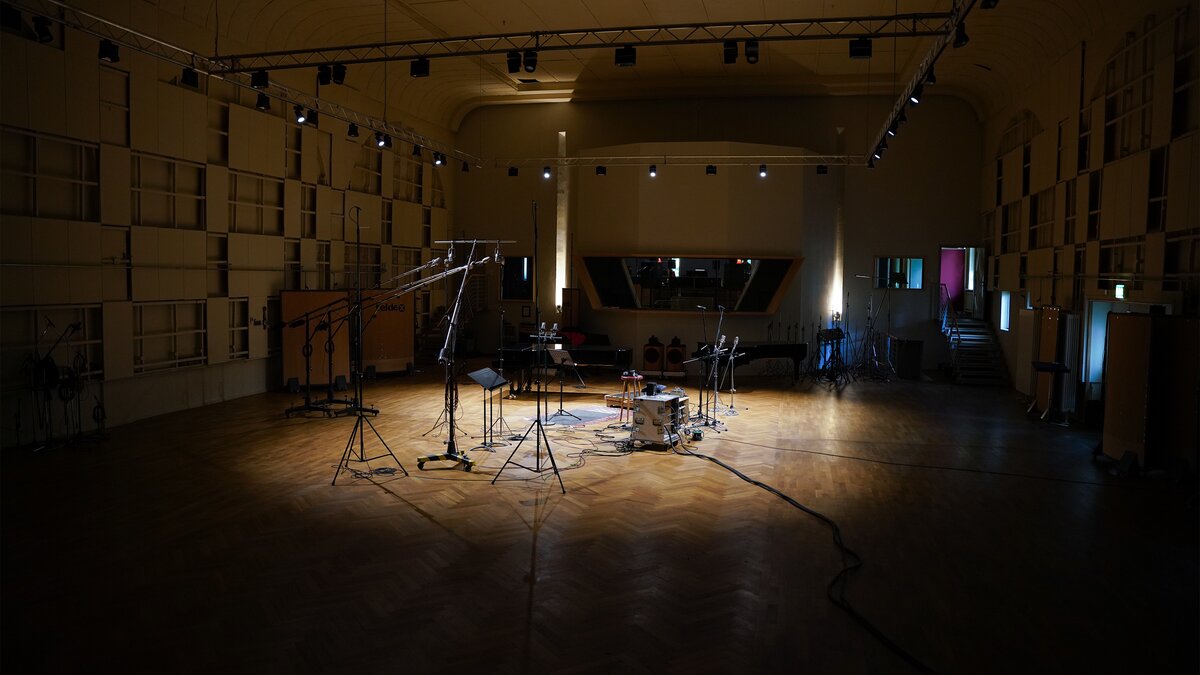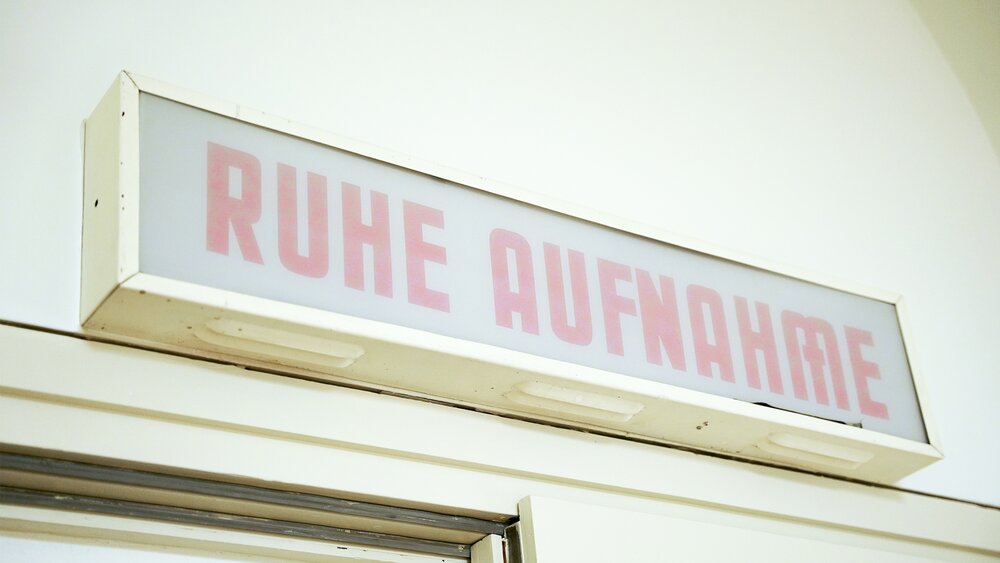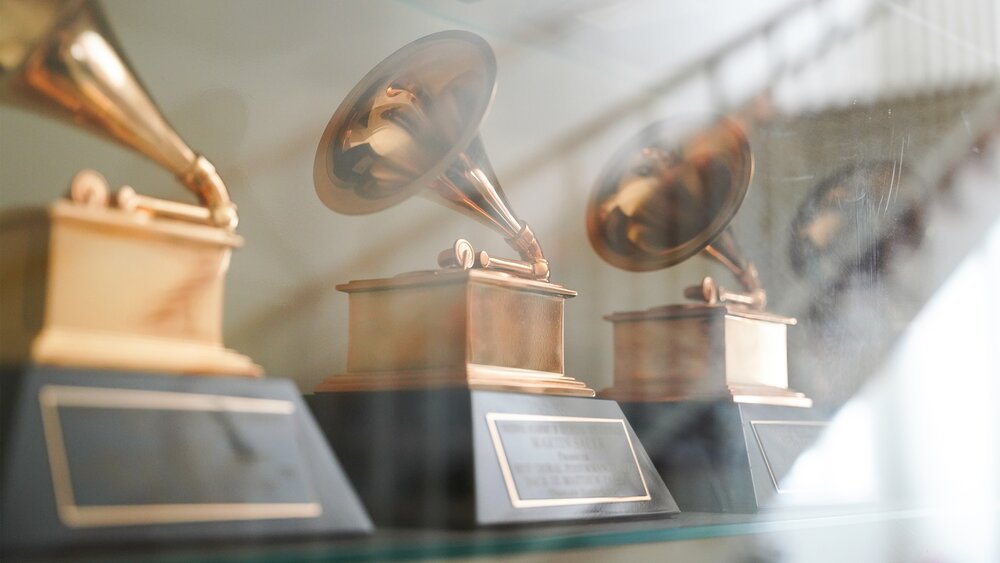by Peter Kirn

It might be peak Germany. One of the world’s most legendary music studios, home to iconic audio recording history, began its life as a Biergarten and dance hall.
Mention ‘Berlin’ and ‘recording studio,’ and most people think of Bowie and Iggy and Hansa Tonstudio, an urban facility that had a view of the Berlin Wall before the wall came down. The Teldex studio is only a U-Bahn trip away inside Berlin city limits, but it feels like it’s in another world. Surrounding Lichterfelde is an idyllic tree-lined residential district on the southwestern edge of the city, far from the grit and tourists. The studio itself is tucked behind an unassuming, pastoral-looking façade, with no hint from the street that inside is one of the world’s largest recording studios.
The location was constructed in 1890 as a concert venue and outdoor Biergarten dubbed the Lichterfelder Festsäle. The venue would grow to host other culture, too, including the Berlin Philharmonic, until it was interrupted like so much of the city by the second World War. That late 19th century architecture remains today.
“We’re literally standing in what was the bandstand,” Cornelius Dürst of Teldex tells us as we step out of the control room overlooking the cavernous soundstage below. That cavernous main soundstage, large enough to fit the Berlin Philharmonic for a recording session—455 square meters (4900 ft2) in area—was the dance floor. Arguably all the details of construction and material that made for a comfortable night of dancing also give this room a unique sound and character—wood floors, original wall construction, and all.
The more storied audio past is embedded right in the studio’s name. ‘Teldex’ derives from ‘Teldec,’ and in turn is a portmanteau of Decca and Telefunken. After the second World War, the UK Decca Records started Teldec as a joint project with Berlin-based Telefunken AG—a link to a big chunk of the best radio, microphone, and vinyl record technology and knowhow in post-war West Germany.

Teldec’s vinyl manufacturing—where all those records were pressed for Teldec and many other imprints—was near Kiel, on the Baltic coast (In the 80s, Telefunken did some cutting into copper plates in the front building.) But all of Telefunken’s engineering was in Berlin, and the company built one of Europe’s greatest studios in Teldec-Studios Berlin (along with a second facility in Hamburg, closed since the late 80s).
The label connection and all the space on the soundstage made the original Teldec-Studios Berlin home to sessions by Germany’s top orchestras, as well as releases for Telefunken and early music sub label Das Alte Werk (as well loved a name as Decca in early music circles). Hildegard Knef recorded here, as did Caterina Valente.
And oh yeah—when it comes to microphones for those recordings, it’s handy to have the Telefunken company operating the studio. Being neighbors to the engineering facility meant that the folks who designed the mics were never far away—and Teldec Studios Berlin was an easy testbed for Telefunken’s latest equipment.
At the studio’s inception, Telefunken was still the global distributor for Neumann and the sought-after U47 and U48. (Mics from that era sometimes even bear the Telefunken name.) Telefunken also partnered with AKG on the C12 and produced the ELA M 250/251 series. Together, U47/48, C12, and M 250/251 make up three of the greatest devices in mic history. Telefunken’s amps and tubes were in demand enough to be found in Abbey Road—theirs was the amp used exclusively by The Beatles. In Lichterfelde, they’re right at home.

Teldec the label is gone, but the studio works both on-site and on the road with Harmonia Mundi, among other long-standing collaborations. And Teldex has proven as big an influence on classical recording in this century as Teldec was in the last one. Near some of the cozier, smaller studios, you’ll find a case with just a few of the Grammy Awards the Berlin studio has won in its recent Teldex life alone—Martin Sauer for the Bach St. Matthew Passion and the 90s Floyd opera Susannah, Tobias Lehmann for Barenboim and Wagner’s Tannhauser, Friedemann Engelbrecht for John Adams’ City Noir, and a half dozen others. Just to take the St. Matthew Passion as an example, the team worked with Rene Jacobs, Akademie für Alte Musik, and RIAS Kammerchor and managed to include not one but two orchestras and two sets of soloists at the Berlin space. The expansive church-like environs created a realistic live recording that almost no other soundstage could easily provide, directed by some of the best knowhow in the business.
Standing on the main soundstage, you can see and feel a lot of that history—down to the springing wooden floor underneath your feet. A Decca tree towers overhead, the landmark 1950s stereo configuration, on craning stands that have lived in this very space since the 50s. Their silvery elongated stands hover like a skeleton, almost like the Brachiosaurus skeleton in Berlin’s Museum für Naturkunde. But this is no museum piece—that stand is simply pausing in a break in a packed orchestral schedule.
And far from resting on its history, Teldex is uniquely positioned as the preeminent facility of the moment. Business in classical recording is expanding, not only for concert recordings, but sample libraries, film scores, and immersive production. The combination of studio and mobility was also uniquely prepared for the demands of the Internet and now distance requirements when concert halls closed—a lifeline for concert music in the age of social distancing. Like the music recorded in its walls, it demonstrates the power of continuity, tradition, and an undying passion for sound.